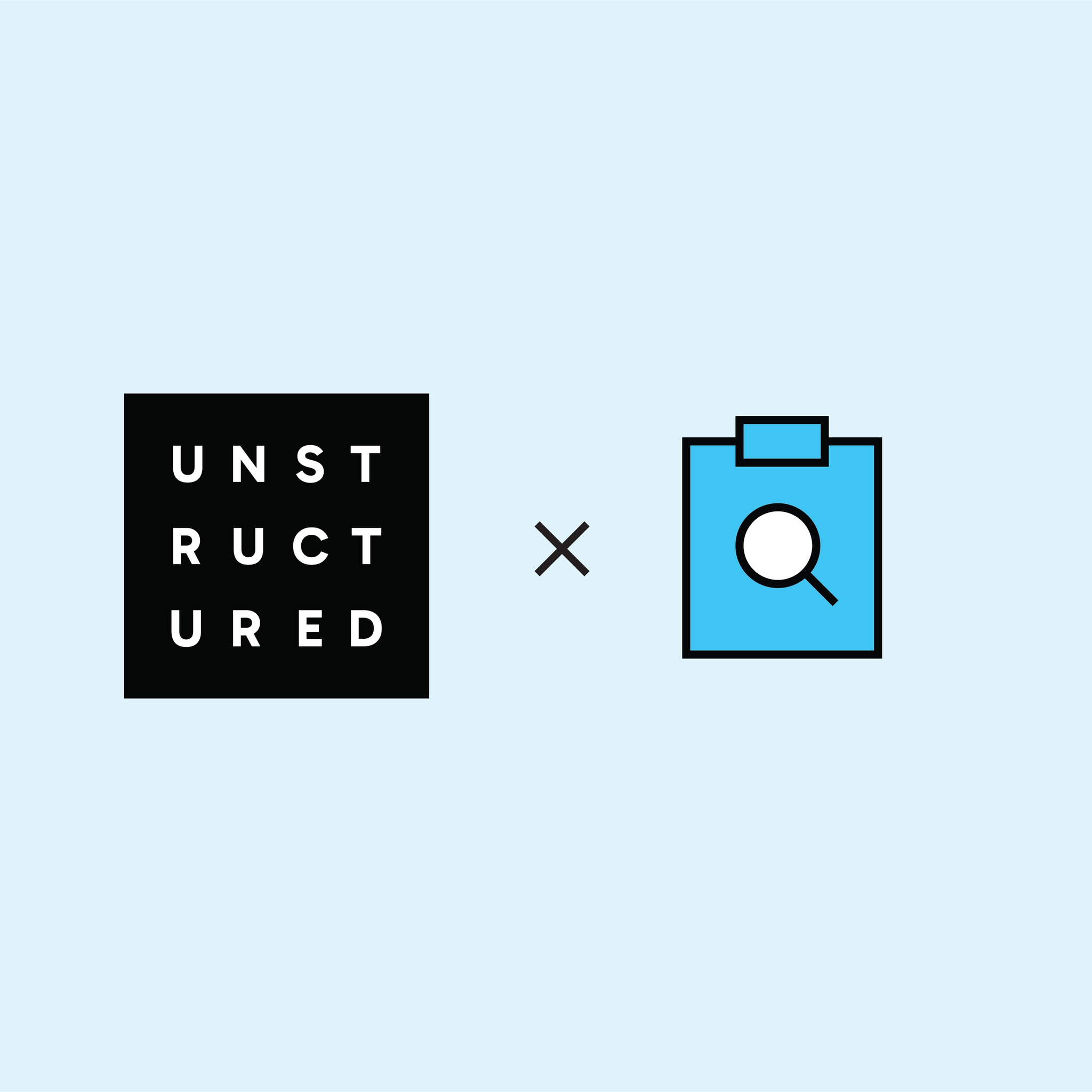
Authors

Welcome to the third post in our series on advanced RAG techniques (here's the first post, and the second post). This time, we’re going back to the source, quite literally.
Before adding the more advanced layers of a RAG system, it's important to get the fundamentals of data preprocessing right. This stage is often undervalued, but it directly determines the quality and performance of the entire system. Unstructured is purpose-built to handle this stage intelligently, offering tools and patterns that make preprocessing not just manageable, but actually effective.
Getting the Data Out of Silos: Ingestion
Ingestion is the first, and often most underestimated, step in building intelligent systems with enterprise data. It’s not just about collecting files or exporting data; it’s about reliably accessing, contextualizing, and standardizing fragmented knowledge from a chaotic ecosystem of siloed internal platforms. Ingestion is where data integrity, completeness, and usability are won or lost. If it fails, everything downstream, aka chunking, enrichment, embedding, retrieval, is compromised.
As you can likely imagine, enterprise data isn’t neatly packaged. It’s scattered across cloud storage buckets, collaboration tools, databases, SaaS applications, and more. Each source brings its own API quirks, content formats, permission models, and metadata conventions. Ingesting this data at scale requires much more than one-off scripts or generic pipelines. It requires a system that can handle the diversity of source systems, preserve context, reconcile formats, and keep everything up to date efficiently.
That’s why successful ingestion pipelines must meet five key requirements:
- Connectivity: Access content from wherever it lives, across both structured and unstructured platforms.
- Context Preservation: Capture and retain critical metadata—authorship, timestamps, permissions, and system-specific signals.
- Normalization: Convert varied content formats into a standardized representation for downstream processing.
- Incremental Update Support: Detect changes and only ingest what’s new to keep systems fresh without ballooning costs.
- Maintainability: Avoid brittle custom code that breaks with API changes or format drift.
Unstructured is designed from the ground up to meet these needs. Its production-grade connectors cover the most common enterprise data systems, including cloud storage (S3, GCS, Azure), collaboration platforms (SharePoint, Confluence, Box), business apps (Salesforce, Jira), databases, and streaming systems like Kafka. These connectors go beyond simple file transfer by embedding logic for metadata extraction, and smart synchronization. They’re continuously maintained, and tested so your ingestion pipelines are robust, scalable, and you don’t have to experience this headache.
Wrangling Your Data: Extraction and Partitioning
After ingestion, the next big step in preparing enterprise content for RAG pipelines is document partitioning and content extraction. This is yet another step where things often get messy. Enterprise data isn’t confined to a single content type or format. It lives across PDFs, docx files, PowerPoint decks, Excel spreadsheets, HTML pages, and so on. Each of these formats encodes content differently, and extracting clean, usable text from them is a deceptively hard problem.
Some open-source tools offer partial coverage: one might be good at extracting content from HTML pages, another at parsing Word documents or processing spreadsheets. But stitching them together into a cohesive pipeline means you, the developer, are now responsible for standardizing their outputs—each of which likely returns text in different schemas, with different assumptions about structure and granularity. For example, how do you reconcile a div tag from HTML with a paragraph tag from docx, or a row from a CSV with a cell block in an Excel file? Without a consistent representation, it’s difficult to apply uniform downstream logic for chunking, embedding, or filtering. You end up spending more time cleaning and reconciling than building.
Worse still, common extraction methods tend to flatten documents into a stream of plain text, stripping away visual layout, images, and positional cues. This loss of structure degrades both chunking and retrieval accuracy, especially for dense or formatted documents like manuals, reports, or spreadsheets.
Unstructured solves this by applying intelligent partitioning, which breaks down diverse documents into distinct elements such as Title, NarrativeText, ListItem, Table, Image, and more; each annotated with detailed metadata like layout coordinates, page numbers, source file type, and hierarchical structure. This preserves spatial and semantic context from the outset and provides a consistent, typed JSON schema across all content types. That means you can process a paragraph from a PowerPoint slide and a Jira ticket in exactly the same way without brittle custom glue code. Partitioning also captures rich media artifacts that are typically lost during extraction: images are preserved as base64-encoded metadata, unlocking multimodal use cases. Tables, meanwhile, are preserved not just as flat text but in their structure converted to plain HTML, maintaining row-column relationships that are critical for accurate interpretation.
Once partitioned, these structured elements become the building blocks for the next critical step: chunking.
Breaking It Down: Chunking Strategies
Once the text is extracted, it needs to be divided into smaller segments, or "chunks." This is arguably one of the most critical preprocessing steps in RAG. While it may sound like a simple formatting step, chunking has profound implications for how well your AI system can retrieve and reason over data.
Chunking choices are vital for effective retrieval. Matching a specific piece of information within a smaller, focused chunk is generally more precise and efficient than matching with a massive document. Smaller chunks tend to have a better signal-to-noise ratio for retrieval. However, there's a fundamental trade-off:
- Smaller Chunks: Offer higher precision for retrieval, making it easier to pinpoint specific facts or matches. But they might lack sufficient context for the LLM to understand the information fully or generate a comprehensive answer.
- Larger Chunks: Provide more context, potentially leading to better generation quality. But they can dilute the relevance signal for retrieval (making it harder to find the specific matching part) and might contain more irrelevant information (noise). They also consume more of the LLM's context window and increase processing costs.
Finding the right balance is key and often requires experimentation and a good understanding of underlying data and common user queries.
Common chunking strategies (and their limits):
- Fixed-Size Chunking. The most basic method: divide text into equally sized blocks (e.g., 500 characters) with optional overlap.
- Pros: Fast & simple.
- Cons: Ignores document structure and meaning—often splits mid-sentence, mid-paragraph, or even mid-word. This can lead to semantic fragmentation and noisy retrieval.
- Recursive Character-Based Chunking. This method recursively splits text using a hierarchy of separators—first by paragraphs, then newlines, then spaces—to get under the character limit.
- Pros: Some structure awareness; better at preserving natural breakpoints than fixed-size.
- Cons: Still primarily size-driven, not meaning-driven. Boundaries can be arbitrary, and important semantic groupings can still get lost.
- Sentence-Based Chunking. Chunks are defined using sentence boundaries.
- Pros: Aligns well with natural language, enabling clearer reasoning for LLMs.
- Cons: Sentence size varies wildly, and individual sentences often lack standalone context.
Unstructured Smart Chunking Strategies
Because Unstructured generates rich document structure during partitioning, it enables structurally-aware and semantically coherent chunking strategies that align more naturally with how humans and LLMs interpret information. After partitioning, the document is already split into its logical segments - document elements, so instead of splitting a large blob of text as normal chunking would do, Unstructured can intelligently combine small related elements and only split large segments when needed, all while preserving the document’s intended structure:
- Basic: Combines sequential elements into chunks while preserving logical boundaries (e.g., paragraph breaks, lists).
- By Title: Groups content under heading elements, preserving document hierarchy and section-level coherence.
- By Page: Treats each page as a self-contained unit, ideal for scanned documents or forms where layout matters.
- By Similarity: Leverages embeddings to group conceptually related elements.
These strategies reduce semantic drift, improve chunk-level relevance, and eliminate the need for brittle post-processing logic.
From Text to Vectors: Embedding Generation Fundamentals
The core idea enabling semantic search in most RAG systems is the conversion of text chunks into numerical representations called embeddings.
Embeddings are vectors (lists of numbers) in a high-dimensional space, generated by an embedding model (often a transformer-based bi-encoder model). These vectors are designed such that texts with similar meanings are located closer to each other in this vector space, while dissimilar texts are farther apart. This geometric relationship allows for mathematical comparison of semantic similarity.
Each cleaned and chunked piece of text is fed into the chosen embedding model, which outputs a corresponding vector embedding. It's crucial that the same embedding model is used to embed the source document chunks during indexing and to embed the user query at retrieval time; otherwise, the comparison will be meaningless.
Not all embedding models are created equal. We wrote a blog post called Understanding embedding models: make an informed choice for your RAG to help you navigate the existing models and open leaderboards.
In short, here are some considerations for choosing an embedding model:
- Model size and architecture: Larger models (e.g., OpenAI’s text-embedding-3-large) generally yield higher-quality vectors but come at higher latency and cost.
- Training data domain: Models trained on general web data might underperform on specialized enterprise domains like law, finance, or biotech. Domain-tuned models might yield better results, and in some cases you may want to consider fine-tuning an embedding model.
- Embedding dimension: Model outputs have varying dimensionality (e.g., 256 vs. 1024 vs. 3072). Higher dimensions capture more nuance but increase storage and search costs.
Unstructured integrates seamlessly with major embedding providers—OpenAI, Amazon Bedrock, TogetherAI, Voyage AI, and others—so you can easily plug in the model that best fits your use case, and experiment across providers without rearchitecting your pipeline.
Making Data Searchable: Basic Indexing with Vector Stores
Once text chunks are converted into embeddings, they need to be stored in a way that allows for efficient searching based on semantic similarity. This is the role of the index, most commonly implemented using a vector database (also called a vector store).
A vector database enables similarity search, a process that compares a user query embedding against a collection of pre-computed document embeddings. The result is a ranked list of documents whose vector representations are most similar to the query vector, typically based on cosine similarity or Euclidean distance.
To handle potentially billions of vectors efficiently, vector databases don't usually compare the query vector to every single stored vector (which would be too slow). Instead, they employ Approximate Nearest Neighbor (ANN) search algorithms (like HNSW - Hierarchical Navigable Small World). ANN algorithms trade a small amount of accuracy for a massive gain in search speed, quickly finding vectors that are likely to be among the closest neighbors.
Many vector database options exist, both open-source and managed services. Examples include Pinecone, Weaviate, Qdrant, Milvus, Redis (with vector search capabilities), Elasticsearch/OpenSearch, etc. Unstructured connects directly to many of these, handling upload and indexing without manual effort. Whichever database you choose to be the destination for your processed documents, you can configure a destination connector in Unstructured for it, and the platform will handle uploading documents seamlessly.
Conclusion
Solid preprocessing isn’t a nice-to-have. It’s the bedrock of an effective RAG system. Ingestion, extraction, chunking, embedding, and indexing must all be handled with care, precision, and scalability in mind. Unstructured helps you get this right from the beginning, giving your downstream applications the clean, contextualized, and actionable data they need to perform.
In our next post, we’ll go over some advanced data preprocessing techniques like contextual chunking, entity extraction, and LLM/VLM-powered enrichments. Stay tuned.


